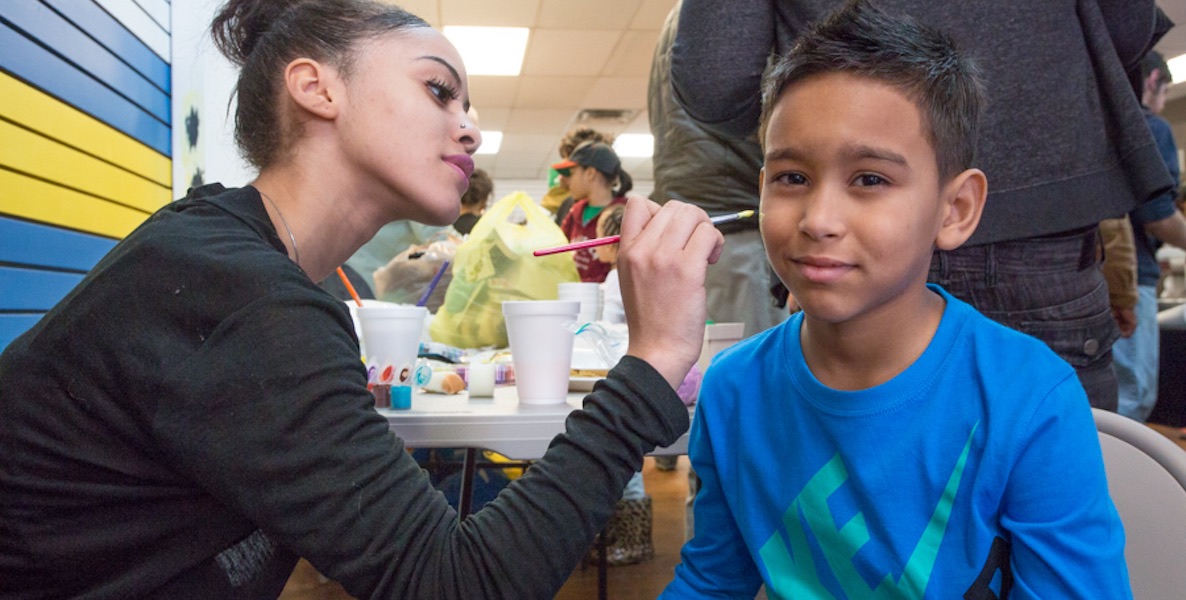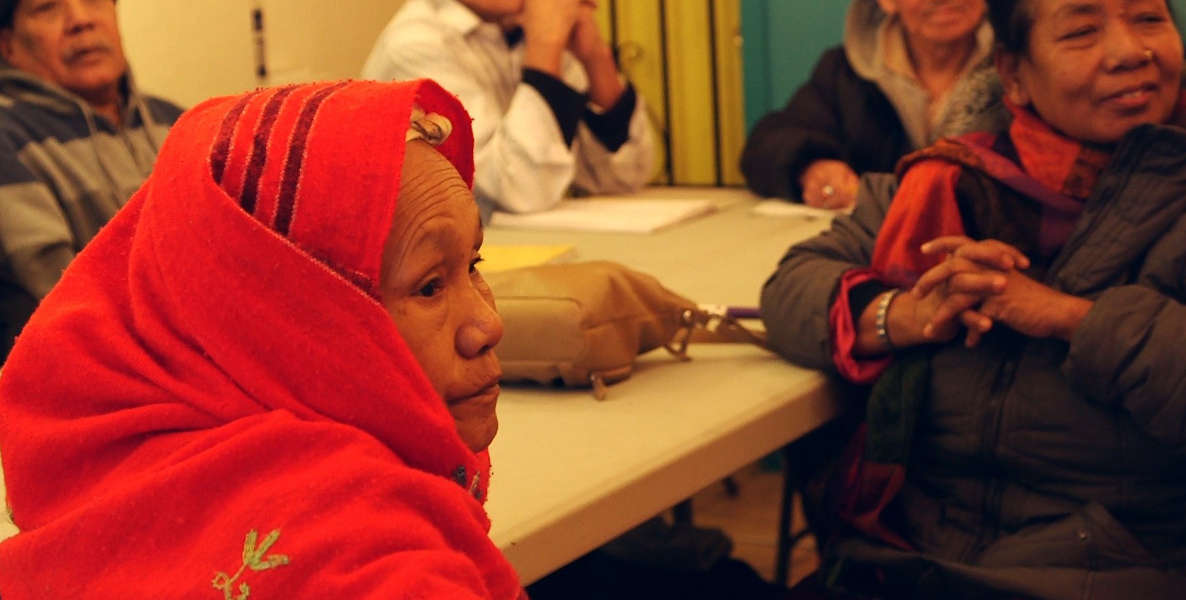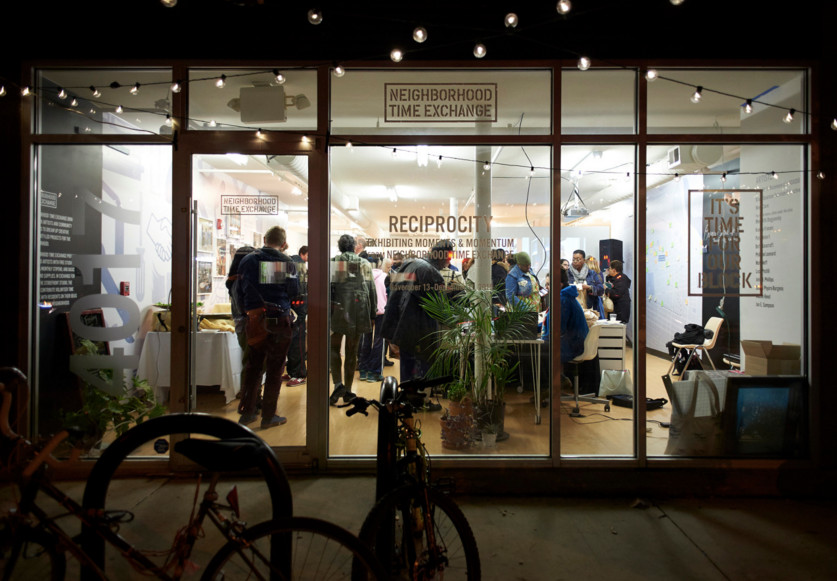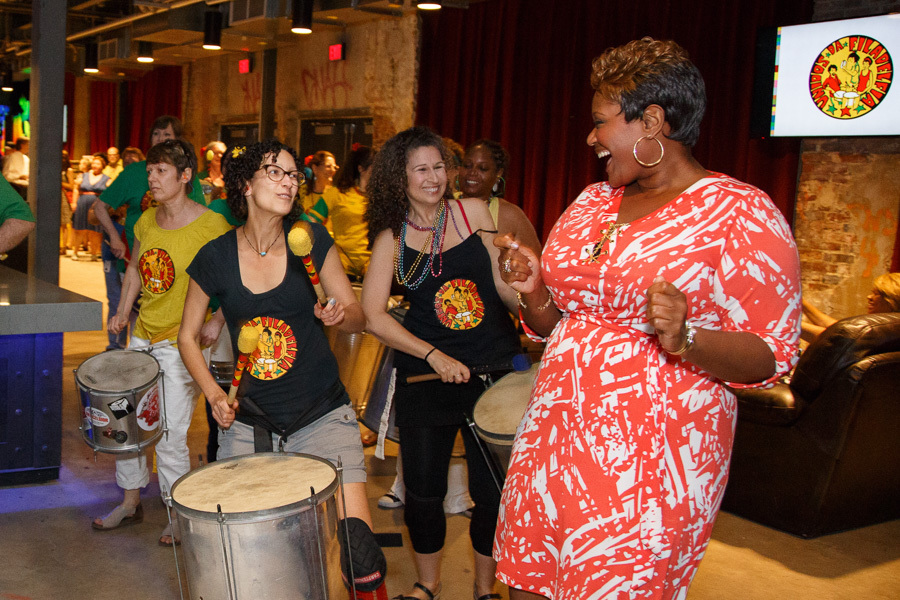For Jane Golden, founder and executive director of Mural Arts Philadelphia, public art is a visualization of democracy—an opportunity for artists, and the communities they represent, to create their own narratives. It’s a mission Golden sees as more imperative now than ever, and one that is increasingly under threat.
“When societies have fallen, just over the history of time, people often attack art first,” Golden says. “It’s because it’s our heart, it’s our soul. It’s who we are, it’s a snapshot of our world.”
In Philadelphia, nothing offers more of a public snapshot than Mural Arts, which over the decades has taken its programs of the walls and into prisons, schools, community centers— anywhere there is a community of people to engage in the practice and relationship-building of art. This summer, it launches an even more ambitious project to capture the essence of Philadelphia—Monument Lab.
Monument Lab will be a citywide temporary installation of public art by 21 artists, across 10 locations, each of which is meant to explore the notion of what an appropriate monument to represent modern Philadelphia would be. The exhibit will run for nine weeks in the fall. This summer, Mural Arts will offer a sneak preview at Franklin Square, and hold events throughout the city.
“Think about a remix of monuments,” Golden says. “What is a contemporary monument? We’re dreaming, dreaming, dreaming and we embrace the aesthetics. But we also really embrace the pragmatic. How do we move the needle in communities around the city, and talk about these bigger issues of what a monument is, and what it means to be represented.”
“When societies have fallen, just over the history of time, people often attack art first,” Golden says. “It’s because it’s our heart, it’s our soul. It’s who we are, it’s a snapshot of our world.”
Curators Paul Farber, Ken Lum, and A. Will Brown approached Golden with the idea of Monument Lab as a way to engage in public art and public history, creating a space where lots of people were invited to think creatively. A pilot phase of Monument Lab took place in City Hall’s courtyard in 2015, where people could contribute monument proposals in a container deemed “the laboratory.” The team collected 455 suggestions, and knew they had a bigger project on their hands.
The 21 artists commissioned for the project (who Golden described as “50-50” local versus non-local) each attempt their own answer to the question: What is an appropriate monument for the current city of Philadelphia?
That question took artists to areas in every corner of the city, where they found inspiration for their work in the physical and historic narratives of the location, but also in the needs of its current residents. While Monument Lab will display the particular visions of the 21 artists involved, those artists are inevitably informed by the communities they’re a part of.
For example, David Hartt, a Pennsylvania artist who designed a monument for the Norris Square neighborhood, drew from the community’s desire for a platform for performance in their area, as well as from the neighborhood’s history of activism and the reclamation of green space. His resulting monument, Golden said, is a stage that pays tribute to that history of activism, while also being responsive to what is needed right now.
“It is an important opportunity for people to have a say,” Golden says. “Sometimes it just seems like things are out of our control, and that problems seem overwhelming and intractable. The truth is, what we’re doing is inviting people to help create their own narrative, and not just letting the narrative be created for you.”
On July 1, Mural Arts will unveil Philadelphia artist Kara Crombie’s monument in Franklin Square, Sample Philly, an interactive sculpture which incorporates musical loops drawn from the city’s musical history. The monument will remain on display until the end of July, and then be later re-installed in mid-September. The unofficial kickoff party will also give Philadelphians an opportunity to talk one-on-one with the artist and curators.
Come mid-September, the rest of the monuments will find their homes in four other city squares, including City Hall, Washington Square, Logan Square and Rittenhouse Square, as well as in five neighborhood parks—Penn Treaty Park, Vernon Park, Norris Square, Malcolm X Park and Marconi Plaza.
“It is an important opportunity for people to have a say,” Golden says. “Sometimes it just seems like things are out of our control, and that problems seem overwhelming and intractable. The truth is, what we’re doing is inviting people to help create their own narrative, and not just letting the narrative be created for you.”
Monument Lab officially runs temporarily over nine weeks, from September 16 to November 19, but Golden said that the goals of Mural Arts go beyond the aesthetic. Monument Lab is an attempt to reflect Philadelphia in the immediate present, but also a way to look back at stories that have long been forgotten or unnoticed.
“One of the curators said that when he first moved to Philadelphia, years back, he started reading about our history, and he started thinking about Billie Holliday, and said, ‘Well where’s the Billie Holliday memorial?’” Golden said. “Who makes those decisions? What are those histories, those narratives that have gone unacknowledged?”
While Mural Arts is working with communities like the Norris Square neighborhood to consider ways that they can make a permanent impact, they’re also already planning an event with policymakers a year after Monument Lab closes. “We want to have a State of the Union address with policymakers, the mayor, city council, to share the ideas that we heard from citizens,” Golden says.
Meanwhile, on Wednesday, Mural Arts is hosting its annual Wall Ball at The Fillmore. The event raises money through an online silent auction and ticket sales, which all go towards supporting Mural Arts’ many public art projects and education programs. “Wall Ball helps us exist,” Golden says.
Wednesday’s Wall Ball will honor three supporters of Mural Arts: Chairman and CEO of FS Investments Michael Forman, President and CEO of the Philadelphia Foundation Pedro Ramos, and Rashid Johnson, recipient of the Tony Goldman Visionary Artist Award.
“We’ll have a really interesting and eclectic collection of music that represents the city, and we’ll have tons of artists and community members there,” Golden says of Wall Ball. “I always think when I go to a Mural Arts event, ‘Oh, this is a snapshot of Philadelphia,’ and I’m always really inspired. Wall Ball is that way as well.”
Wall Ball is Wednesday, June 14, from 6 – 10 p.m. at The Fillmore, and tickets start at $200. Get tickets here and explore the online silent auction, open now until 9 p.m. on June 14.
Header Photo:







